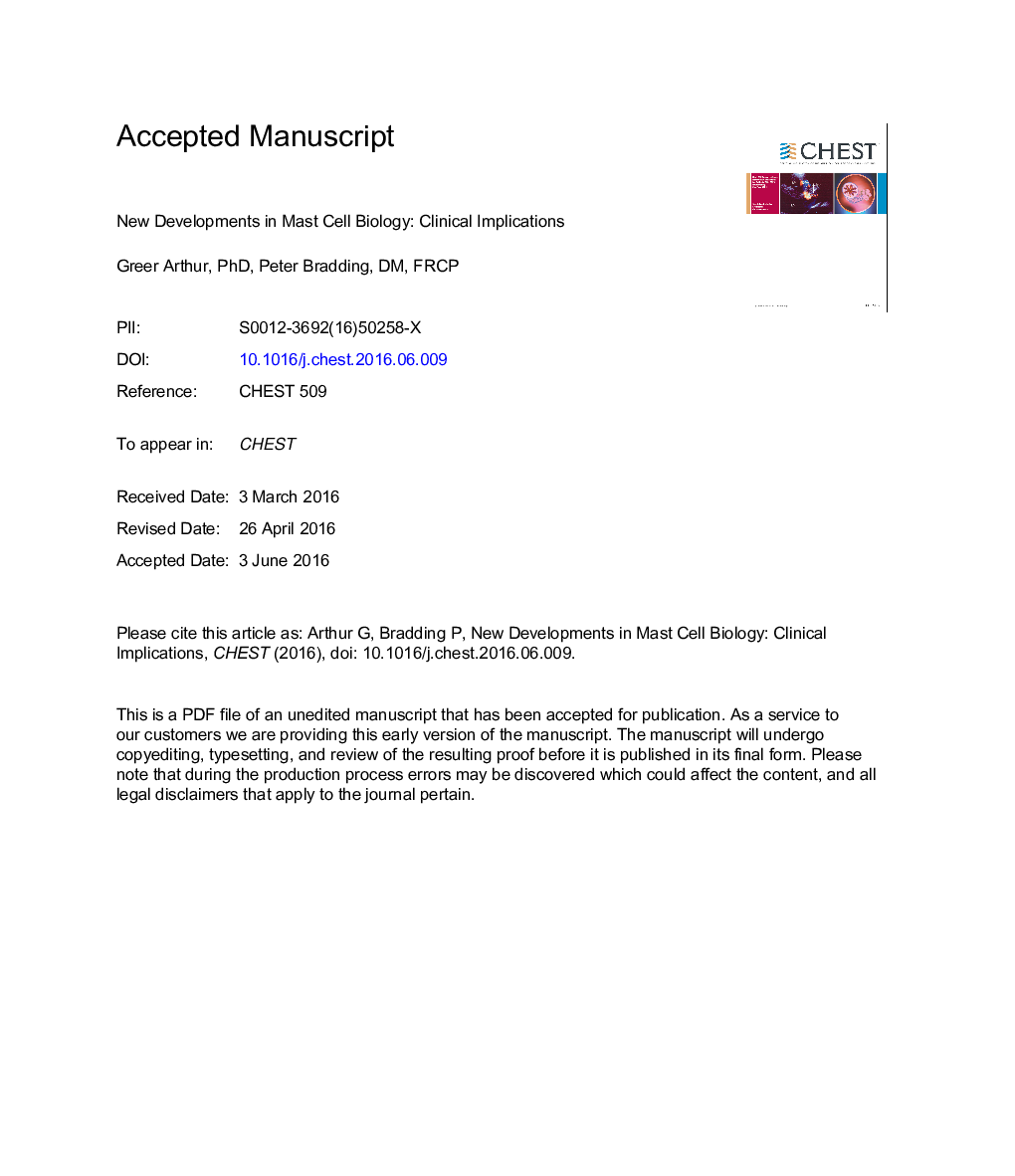| Article ID | Journal | Published Year | Pages | File Type |
|---|---|---|---|---|
| 5600575 | Chest | 2016 | 36 Pages |
Abstract
Mast cells (MCs) are present in connective tissue and at mucosal surfaces in all classes of vertebrates. In health, they contribute to tissue homeostasis, host defense, and tissue repair via multiple receptors regulating the release of a vast stockpile of proinflammatory mediators, proteases, and cytokines. However, these potentially protective cells are a double-edged sword. When there is a repeated or long-term stimulus, MC activation leads to tissue damage and dysfunction. Accordingly, MCs are implicated in the pathophysiologic aspects of numerous diseases covering all organs. Understanding the biology of MCs, their heterogeneity, mechanisms of activation, and signaling cascades may lead to the development of novel therapies for many diseases for which current treatments are lacking or are of poor efficacy. This review will focus on updates and developments in MC biology and their clinical implications, with a particular focus on their role in respiratory diseases.
Keywords
TNFTh2FcεRITSLPCPA3MCTCIPAHCysLTCADM1β2-ARILC2T helper 2ADDSSCFTGFPAHPI3KδTLRIPFASMMCTCa2+AsthmaCOPDtransforming growth factorToll-like receptorcluster of differentiationperGroup 2 innate lymphoid cellAirway smooth muscleStem Cell Factortumor necrosis factorPulmonary arterial hypertensionPulmonary fibrosisidiopathic pulmonary fibrosisThymic stromal lymphopoietinLeukotrieneMast cellCell adhesion molecule 1Pulmonary hypertensionIdiopathic pulmonary arterial hypertensionprostaglandinβ2-adrenergic receptorCalcium ion
Related Topics
Health Sciences
Medicine and Dentistry
Cardiology and Cardiovascular Medicine
Authors
Greer PhD, Peter DM,
